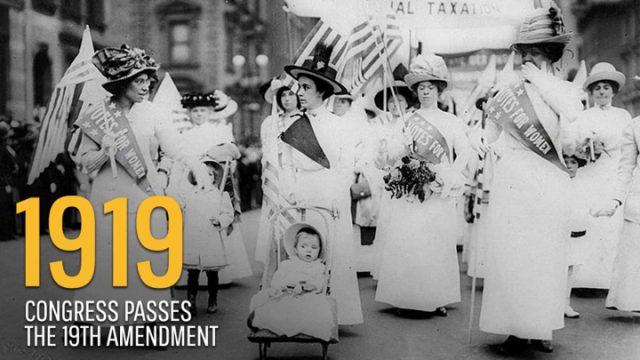
Blog post by “e-Patient Dave” deBronkart (Introduction by Joe Babaian)
Introduction
We are honored this week to welcome a very special guest to #hcldr. Dave deBronkart better known as @ePatientDave is a globally recognized advocate for patients. His own healthcare journey propelled him to use his voice along with his singular passion and determination to advocate and push for change in the way healthcare is accessed and delivered. Check out his full bio at the end of this blog!

Dave & Joe – Orlando HIMSS19
I have known Dave for years online in the #HCLDR community and am the better person for it. I was fortunate to finally meet him in person this year at the end of #HIMSS19 – right at the Orlando airport! I saw him across the walkway, dropped my bags, and hurried over. It was great to meet IRL!
I know you’ll enjoy his article this week on how the role of patients in today’s world parallels the experiences of the Women’s Suffrage Movement from 100 years ago. Dave wanted this blog to correspond with the special 100th Anniversary of the 19th Amendment to the US Constitution, granting women the right to vote. Just as in healthcare, a right granted isn’t always equal to access or equity. While women were given the right to vote, many women were still prevented from voting by various barriers and exclusions that were very real for the women impacted. Read more here in an article by the Atlanta Journal-Constitution from 2017.
Colin and I are so excited that Dave wanted to share his personal perspective and powerful experiences with us all here at #HCLDR on this special occasion!
Blog post
What can healthcare leaders learn about the role of patients from the history of the women’s movement? Join us to discuss this on June 4, 2019, a grand anniversary – a hundred years after this big event.
On this day 100 years ago, Congress ratified the 19th Amendment, giving American women the vote. A year later it was ratified by ¾ of the states, just in time for the 1920 elections.
In my advocacy for listening to patients as genuine contributors to healthcare, I’ve often drawn parallels between their movement and ours. In both cases, activists presented clear evidence and rational arguments for years but were belittled or ignored.
It took generations for older men to give up their old views that women should have no voice. Forty-seven years earlier, in 1872, Susan B. Anthony walked into her local polling place and voted, and was arrested. And that was a generation after the Seneca Falls Convention, the first US women’s rights convention. And that was 72 years after future first lady Abigail Adams wrote to her husband John in 1776, saying “Remember the ladies … all men would be tyrants if they could.”
You might think that’s a bit strong, but from the woman’s point of view, can you argue with it, considering that it took 143 more years for it to get through Congress? Who was right – Abigail, or the men who probably said, “It’s not THAT bad”? I cited Abigail in a recent essay in the BMJ, Open Access: Remember the Patients. There are parallels with other movements – did you know that the famous patient saying “Nothing about me without me” arose back in the 1980s in the disability rights movement? Another relevant realization from that movement is “When someone else speaks for you, you lose”. That’s exactly what Susan B. Anthony and Elizabeth Cady Stanton discovered when they agreed to let men speak for them in Congress: the men, despite whatever good intentions they had, agreed to a compromise the women vehemently disagreed with.

Jewish Women’s Archive. “Chronology of Women’s Suffrage in America, 1776-1920.” (Viewed on May 29, 2019) <https://jwa.org/media/chronology-of-womens-suffrage-in-america>.
A key similarity between the movements is that although not everyone is an arrogant paternalist, some people sure are – there’s a strong feeling of “you can’t handle the truth” among too many clinicians. This was revealed by physician sentiment about patient access to medical records via OpenNotes, in the initial OpenNotes survey, which reflected the paternal worry “Unmarried teens would jump off bridges” (NY Times) when the first home pregnancy test was invented … and suppressed.
Cognitive dissonance holds back progress
Cognitive dissonance is the problem that happens in the mind when you see something that’s obviously true but it clashes with your beliefs about how the world works. When that happens, the mind gets stupid, trying to rationalize what you see with what you think. Consider these bullet points from a 1912 flyer against women’s suffrage:

- 90% of women don’t want it or don’t care. [Well that’s a great reason to deny it to all of them, eh? This precisely parallels the providers who say “My patients aren’t like you, Dave.”]
- It means competition of women with men instead of cooperation. [Au contraire! Cooperation is exactly what we seek. In what world view is that competition?]
- 80% of women eligible to vote are married, so they would only duplicate or cancel out the husband’s vote. (What???)
- It can be of no additional benefit commensurate with the additional expense. [Which should we discuss first, here … the claim that there’s no benefit, or the issue of our out-of-control costs managed by the current authorities?]
Don’t let cognitive dissonance cloud your brain – join us for this free-wheeling discussion of the many parallels between this historic centennial and the patient movement. Join the #hcldr community on Tuesday, June 4th at 8:30pm Eastern (for your local time click here) as we discuss the following engaging topics with special guest @ePatientDave:
-
T1: In healthcare, what impact do the voices of women presently have? What impact should their voices have and how do we get there?
-
T2: What responsibility does healthcare leadership have for ensuring equity, fairness, and diversity? Does making things fair or equitable in healthcare actually help?
-
T3: What does the ongoing quest for true women’s autonomy have in common with the desire for patient autonomy? Value?
-
T4: What top factors are truly holding back positive change in the way we envision within healthcare? What steps would you take to remove these blocks?
-
Bonus: How does the women’s suffrage movement mirror the challenges women and all patients face when looking for a true seat at the table in healthcare?
Dave’s Full Bio:
Dave deBronkart, known on the internet as e-Patient Dave, is the author of the highly rated Let Patients Help: A Patient Engagement Handbook and one of the world’s leading advocates for patient engagement. After beating stage IV kidney cancer in 2007 he became a blogger, health policy advisor and international keynote speaker. An accomplished speaker in his professional life before cancer, he is today the best-known spokesman for the patient engagement movement, attending over 600 conferences and policy meetings in nineteen countries, including testifying in Washington for patient  access to the medical record under Meaningful Use.
access to the medical record under Meaningful Use.
A co-founder and chair emeritus of the Society for Participatory Medicine, e-Patient Dave has appeared in Time, U.S. News, USA Today, Wired, MIT Technology Review, and the HealthLeaders cover story “Patient of the Future.” His writings have been published in the British Medical Journal, the Patient Experience Journal, iHealthBeat, and the conference journal of the American Society for Clinical Oncology. In 2009 HealthLeaders named him and his doctor to their annual list of “20 People Who Make Healthcare Better,” and he’s appeared on the cover of Healthcare IT News and the Australian GP magazine Good Practice.
Dave’s TED Talk Let Patients Help went viral, and for years was in the top half of the most viewed TED Talks of all time with over a half million views; volunteers have added subtitles in 26 languages, indicating the global appeal of his message. In 2012 the National Library of Medicine announced that it’s capturing his blog in its History of Medicine Division, and he was the Mayo Clinic’s 2015 Visiting Professor in Internal Medicine.
Resources:
Open Access: Remember the Patients. BMJ, April 2019, Dave deBronkart. https://www.bmj.com/content/365/bmj.l1545
“Unmarried teens would jump off bridges”: NY Times on suppression of home pregnancy tests. Society for Participatory Medicine, July 2016, Dave deBronkart. https://participatorymedicine.org/epatients/2016/07/unmarried-teens-would-jump-off-bridges-ny-times-on-suppression-of-home-tests.html
“Vote No on Suffrage: 90% don’t care” (1912 flyer saying most women aren’t asking for the vote, so why give SOME the privilege? Strong parallels with people who say “My patients aren’t like you.”) Society for Participatory Medicine, Nov 2012, Dave deBronkart. https://participatorymedicine.org/epatients/2012/11/vote-no-on-suffrage-90-dont-care.html
What do empowered and engaged really mean? epatientdave.com, July 2016, Dave deBronkart. https://www.epatientdave.com/2017/06/28/video-what-do-empowered-and-engaged-really-mean/ (9-minute slidecast with the definitions Dave uses, from the World Bank and Arnstein’s Ladder of Citizen Participation)
What’s up with the US health system?? (What I’m doing in 2019, episode 1) Society for Participatory Medicine, April 2019, Dave deBronkart. https://www.epatientdave.com/2019/04/28/what-im-doing-episode-1/
Main Image Credit: Public Domain, Fair Use (Published prior to 1924).